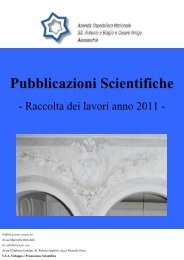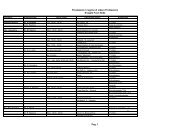Working Paper of Public Health Volume 2012 - Azienda Ospedaliera ...
Working Paper of Public Health Volume 2012 - Azienda Ospedaliera ...
Working Paper of Public Health Volume 2012 - Azienda Ospedaliera ...
Create successful ePaper yourself
Turn your PDF publications into a flip-book with our unique Google optimized e-Paper software.
<strong>Azienda</strong> <strong>Ospedaliera</strong> Nazionale“SS. Antonio e Biagio e Cesare Arrigo”<strong>Working</strong> <strong>Paper</strong> <strong>of</strong> <strong>Public</strong> <strong>Health</strong>nr. 16/<strong>2012</strong>main potentiality <strong>of</strong> the proposed methodology, which might be considered alternative to theDEA approach. Recalling the analysis proposed by Ferrier et al. (2006), in which authorsapply the output-based data envelopment analysis with two different assumptions (i.e. strongdisposability <strong>of</strong> outputs and weak disposability <strong>of</strong> outputs) to a sample <strong>of</strong> Pennsylvaniahospitals introducing the uncompensated care as bad output and the health production asgood ones; the DDF approach would give the possibility to consider jointly both outputs (i.e.bad and good outputs) instead <strong>of</strong> separately. This could be thought as the plus value given bythe DDF approach: the possibility to consider the uncompensated care as a bad outputsimultaneously to the suggested good outputs, proposing an alternative option for theperformance estimation. For this reason, the DDF technique appears an interesting approachfor estimating hospitals’ efficiency performance.This work proposes a two stage methodology, as suggested by Simar and Wilson (2007). Thenumber <strong>of</strong> employees and beds are considered as input, whereas the health production is‘good’ output and financial loss is ‘bad’. In the first stage, efficiency scores are computedusing input, good output and undesirable output through linear programming. In the secondstage, these scores have been regressed for some key explanatory variables to test if theallocation <strong>of</strong> employees at a higher level can negatively influence the hospital’s performance.This is exactly the main aim <strong>of</strong> this work: analyzing the impact <strong>of</strong> the hierarchicaladministrative organization on the performance <strong>of</strong> the Italian healthcare industry in terms <strong>of</strong>efficiency, calculated considering financial losses as bad output and health production asgood outcome. Recalling the hierarchical structure suggested by Simon (1947), the authorswill find that, by reducing the relative frequency <strong>of</strong> administrative workers involved in thecontrolling group (the highest levels <strong>of</strong> the hierarchical administrative organization), theefficiency grows. In other words, considering several hierarchical levels, the allocation in thelower level, instead <strong>of</strong> the higher one, could be a strategy to increase the medical centres’efficiency, as well proposed in this paper (with good and bad outputs).In the second section, the data and methodology <strong>of</strong> this paper are proposed; whereas in thethird one the empirical analysis is presented. Finally, in the last section, some conclusionsabout the main results are discussed.2. Data and methodologyThere are two main phases in this work. In the first stage efficiency scores are calculated,introducing the directional output distance function; whereas in the second stage these values5



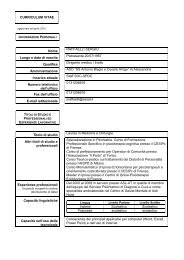
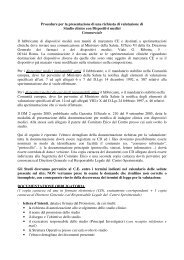

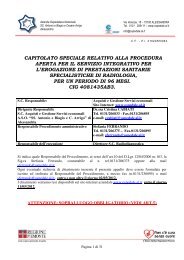
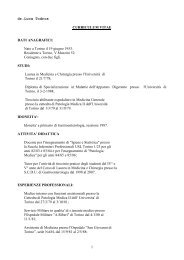
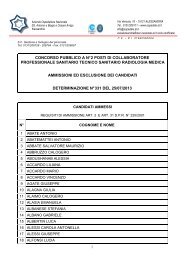

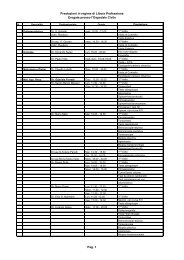


![[torino - 1] lastampa/urc/01 ... 26/10/09 - Azienda ...](https://img.yumpu.com/44058002/1/190x32/torino-1-lastampa-urc-01-26-10-09-azienda-.jpg?quality=85)

